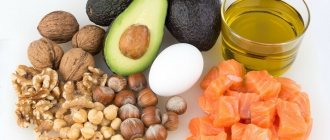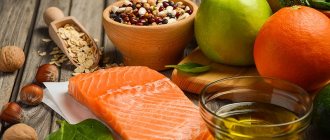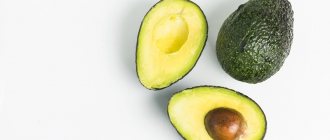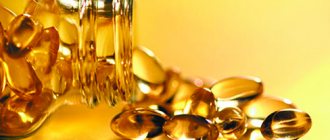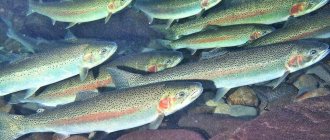Home — For the public
- Map of medical organizations
- Vaccination
- Clinical examination
- Fluorography
- Addresses and opening hours of clinics
- Emergency rooms
- Oncology
- Where to take an HIV test
- Healthy child's office
- Services
- Prevention of CVD
- Disease Prevention
- World Patient Safety Day
- Newspaper "Medical News"
- specialist
- School of Health
— Disease prevention
- HIV infection
- All about vaccination
- All about proper nutrition
- Hepatitis
- Flu
- Dementia
- Schoolchildren's health
- STD
- Tick-borne encephalitis
- Whooping cough
- Measles
- Legionellosis
- Meningococcal infection
- Oncology
- Acute intestinal infection
- Pediculosis
- First aid
- Pneumococcal infection
- Pneumonia
- Prevention of rabies
- Dependency Prevention
- Rotavirus infection
- Diabetes
- Cardiovascular diseases
- Injuries
- Tuberculosis
- Tularemia
- Physical activity
- Obstructive pulmonary disease
- Exotic infections
- Ecology
- Why is swimming in ponds dangerous?
— All about proper nutrition — Benefits of Omega 3, 6, 9
People striving for an ideal figure consider fat their main enemy. Not everyone realizes that for the body to function properly, the correct ratio of fats is required, especially polyunsaturated fatty acids or omega 3-6-9 . Trying to exclude any component can cause serious harm to health. The quality of the products consumed is no less important.
Harmful and healthy fats
Fat is an essential element of the human body. This substance is part of the cell membrane. Without fats, no system can function. In addition, vitamins of some groups (such as A, D, E, K) are fat-soluble. That is, without this connection they simply will not be absorbed.
Fats ensure stable functioning of the digestive system, sufficient production of hormones, and maintain good condition of the skin, nail plates, and hair. Not all such substances are beneficial. The body needs unsaturated fats. Saturated ones, on the contrary, are poorly digested and are deposited in the form of excess fatty tissue.
Most unsaturated compounds are of plant origin and are liquid. Saturated fats found in dairy products, meat, lard, solid. You should not completely abandon the listed products. They contain a lot of protein, vitamins, and minerals necessary for the full formation of cells and tissues. Saturated fats need to be introduced into the diet in doses, as they cause an increase in the content of low-density lipoproteins (“bad” cholesterol).
Attention: with strong heating, vegetable oils lose their beneficial properties. When exposed to high temperatures, carcinogens are formed in them!
The most harmful are trans fats (or hydrogenated oils), which are difficult to digest and have extremely low nutritional value. They have a destructive effect on the pancreas, digestive and cardiovascular systems.
This difference in how the body perceives fats is explained by their structural differences. The benefits come from compounds saturated with fatty acids.
Causes of omega-3 PUFA deficiency
- Insufficient consumption of oily fish
- perhaps one of the most common causes of omega-3 fatty acid deficiency. So, say, in the USA, according to statistics, the average person eats less than 13 grams of fish per day - for comparison: the recommended minimum is 40 grams.
In addition, the modern Western diet is rich in their antagonists - omega-6 with pronounced pro-inflammatory properties.
Add salmon, salmon, herring, trout and tuna to your diet - they are richest in these fatty acids.
- Impaired flow of bile (cholestasis)
- another common problem leading to a lack of fat-soluble compounds (vitamins and acids). Bile is an emulsifier of fats. In addition, it is she who activates pancreatic enzymes.
The following medications are recommended:
- Plant enzymes or enzymes of animal origin - when exocrine pancreatic insufficiency is detected.
- Phosphatidylcholine is a phospholipid that can be taken on an ongoing basis. Part of the components of bile and cell membranes.
- If methylation is impaired (necessary, in the context of these pathologies, for the formation of phospholipids), use supplements containing methyl group donors (S-adenosylmethionine, trimethylglycine, methylcobalamin).
- If the outflow of bile is impaired, a doctor may consider using animal bile (only if there is no damage to the mucous membrane of the gastrointestinal tract).
- Ursodeoxycholic acid is a non-toxic bile acid with anti-inflammatory, litholytic effects. Used in the treatment of cholestasis and cholelithiasis.
- Malabsorption
- this is a question about the intestines and the integrity of its epithelial cover. A decrease in the number of villi, on which the process of splitting and then absorption also occurs, leads to indigestibility of nutrients.
- Genetics
— in particular, polymorphisms in genes involved in the conversion of alpha-linolenic acid to EPA and DHA.
- Mitochondrial dysfunction.
Mitochondria are the furnaces where fatty acid oxidation occurs. There are many reasons for their damage. One of the most common, perhaps, is taking antibiotics - and this is not surprising: after all, our little power plants were once bacteria that successfully formed partnerships with other cells.
In addition, say, proton pump blockers (“Omez”), used to reduce the production of hydrochloric acid in the treatment of gastritis and gastric and duodenal ulcers, will also affect mitochondria outside the digestive tract.
As a rule, disturbances in the functioning of mitochondria will occur in the presence of metabolic syndrome - its diagnosis takes into account body mass index, waist size, as well as the following indicators:
- Insulin.
- Glucose.
- Triglycerides.
- HDL (high density lipoprotein).
- LDL (low density lipoprotein).
- Cholesterol.
Note
: dosage - 10-15 mg/kg body weight. Take at night.
We recommend
“Physiology of digestion: stages, organs, enzymes” Read more
You can also take a test for organic acids in your urine - in particular, monitor the level of:
- Succinate.
- Aconitata.
- Fumarata.
- Citrate.
- Isocitrate.
- 2-oxoglutarate.
Note
: the Krebs cycle occurs in the mitochondrial matrix - that is why determining the concentration of the acids involved in it will be indicative.
If mitochondrial function is impaired, it is recommended to consider taking the following dietary supplements:
- L-carnitine - transports fatty acids from the cytoplasm into the mitochondrial matrix.
- Magnesium.
- Coenzyme Q10.
- Alpha lipoic acid.
- B vitamins.
- antioxidants that protect lipids from oxidation by free radicals.
What are fatty acids
Fatty acids are a kind of “building material” from which fats are directly composed. Among these compounds there are those in the absence of which adequate functioning of internal organs and systems is impossible. These are unsaturated Omega acids.
The molecules of these substances differ in their structure. They are conventionally divided into two groups:
- monounsaturated, when there is one double bond between adjacent carbon atoms (Omega-9);
- polyunsaturated, if there are two or more such bonds (Omega-3, Omega-6).
The number in the name indicates where this double bond is located. For example, in Omega-3 it is located after the third carbon atom from the end of the chain.
Unsaturated fatty acids help strengthen immune defense and preserve vision. Especially important for children. A child who consumes a sufficient amount of Omega increases resistance to stress, improves memory and concentration. Such children develop better and master educational programs.
Not many people know that fatty acids help get rid of excess weight. They provide the necessary level of “good” cholesterol and reduce the content of “bad” cholesterol. Studies have shown that these compounds stimulate metabolic processes. Food is better absorbed, the body stops accumulating “reserves”. Omega activates the synthesis of the PPAR-alpha protein, which burns subcutaneous fat and fights fatty liver.
Fatty acids are important for athletes. They increase endurance, help the heart cope with increased stress, and normalize blood pressure.
All three types of acids are needed to maintain health, since their effects are slightly different.
Omega-3 polyunsaturated fatty acids
Omega-3 (ω-3) polyunsaturated fatty acids
(eng.
omega-3 fatty acids
) - fatty acids important for human physiology.
- “Polyunsaturated” means that a given fatty acid molecule has at least two double and/or triple carbon-carbon bonds.
- “Omega-3” or “ω-3” (or “n-3”) means that after the third (to the fourth) carbon atom, counting from the methyl end of the fatty acid chain, there is a double bond.
Which fatty acids belong to the omega-3 family?
Firstly, this is the so-called “essential” (or “essential”), that is, linolenic
(more correctly called
α-linolenic
)
acid
.
It is found in large quantities in some vegetable oils, and in small quantities in animal fats (see “Foods containing linolenic acid”). Secondly, these are two long-chain fatty acids that the human body can synthesize from the shorter linolenic acid, but, nevertheless, the main “suppliers” of which are sea fish from the northern seas and the meat of marine animals: eicosapentaenoic acid
and
docosahexaenoic acid
.
Thirdly, other, less important for human physiology (or less studied) omega-3 fatty polyunsaturated acids:
- hexadecatrienoic acid
- stearidonic (or octadecatetraenoic) acid
- eicosatrienoic acid
- eicosatetraenoic acid
- heneicosapentaenoic acid
- docosapentaenoic (or clupanodonic) acid
- tetracosapentaenoic acid
- tetracosahexaenoic (or nisic) and other acids
| The structure of the molecules of the most important omega-3 polyunsaturated fatty acids for humans (from top to bottom): α-linolenic, eicosapentaenoic and docosahexaenoic |
More details: list of omega-3 polyunsaturated acids.
Physiological needs and sources of omega-3 polyunsaturated acids
According to Methodological Recommendations MP 2.3.1.2432-08 “Norms of physiological needs for energy and nutrients for various groups of the population of the Russian Federation,” approved by Rospotrebnadzor on December 18, 2008, the physiological need for adults is 0.8-1.6 g/day omega- 3 fatty acids, 1-2% of the daily calorie intake. The optimal ratio of omega-6 to omega-3 fatty acids in the daily diet should be 5-10:1. The physiological need for omega-3 fatty acids for children is 1-2% of the daily caloric intake.
| The food chain through which long-chain omega-3 PUFAs synthesized by diatoms, cryptophytes and peridinium microalgae are transmitted to humans (Gladyshev M.I., 2012) |
Of all known organisms, only a few microalgae, such as diatoms, peridineans and cryptophytes, are capable of effectively synthesizing and accumulating large amounts of eicosapentaenoic and docosahexaenoic acids in their biomass.
Therefore, seas, lakes and rivers are the main deposits of long-chain omega-3 polyunsaturated fatty acids (PUFAs). Eicosapentaenoic and docosahexaenoic acids synthesized by microalgae are transferred along the food chain to aquatic invertebrates, from them to fish and then to humans and other terrestrial animals. Eating fish containing sufficient amounts of eicosapentaenoic and docosahexaenoic acids is for most people a necessary condition for the normal functioning of the circulatory and nervous systems. The greatest nutritional value in this regard is possessed by marine fish, which are found in the thickness of surface waters and their food chains are based on the production of diatoms and peridinium algae, as well as on planktonic copepods, capable of accumulating eicosapentaenoic and docosahexaenoic acids from microalgae in their biomass. Such fish are herring, sardine, capelin, which feed on zooplankton (copepods), and large salmon (salmon, pink salmon, sockeye salmon), which feed on smaller fish. Marine bottom fish, such as flounder, like almost all freshwater fish (tilapia, Nile perch, Victorian catfish), contain relatively few polyunsaturated fatty acids and its consumption in food cannot provide the recommended daily doses of eicosapentaenoic and docosahexaenoic acids (Gladyshev M.I. ., 2012). In fish, eicosapentaenoic and docosahexaenoic acids are not found in pure form, but as part of the phospholipids of cell membranes. This “packaging” prevents the degradation of long-chain omega-3 PUFAs during cooking. Therefore, in fried, boiled and baked fish (as well as in canned food), the content of eicosapentaenoic and docosahexaenoic acids does not decrease compared to raw fish. Thus, it is necessary to eat fish meat, and not “fish oil” rendered from it.
Biological effects of polyunsaturated omega-3 fatty acids
The biological effects exerted by omega-3 fatty polyunsaturated acids are realized at the cellular and organ levels. As a structural component of biological cell membranes, omega-3 PUFAs have a direct effect on:
- fluidity of the lipid biolayer, membrane permeability
- membrane-bound enzyme activity
- functioning of membrane receptors and antigen recognition
- electrophysiological properties of membranes
The amount and ratio of docosahexaenoic and arachidonic acids in the cell membrane determines its functions.
Thus, the viscosity and “fluidity” of a biological membrane depend on the predominance of omega-3 PUFAs. In connection with cell membrane proteins, PUFAs form special receptors that perceive and convert signals from the external environment, thus changing cellular metabolism in accordance with changing environmental conditions. Membrane enzymes, interacting with PUFA biolayers, acquire greater stability and the ability to carry out biochemical reactions. Such an environment provides proteins with “privileged” operating conditions. Thus, PUFAs have a regulatory effect on the electrophysiological properties of biomembranes and the functions of membrane proteins, which is of particular importance in tissues with high electrophysiological activity (brain tissue, retina).
Omega-3 PUFAs play a special role in the maturation and functioning of the central nervous system in children, stimulating neurogenesis, synaptogenesis, neuron migration, and participating in the process of myelination of nerve fibers. These PUFAs ensure the normal development of sensory, motor, behavioral functions due to concentration in synaptic membranes and modulation of neurotransmission (Zakharova I.N., Surkova E.N.).
The use of a fat emulsion containing omega-3 fatty acids in the postoperative period for experimental widespread purulent peritonitis helps restore the structure of the small intestine, liver and heart, reduces the severity of inflammation, and prevents the development of dystrophic and necrotic changes. Morphometric parameters of the adrenal glands of experimental animals receiving this drug in the postoperative period indicate its ability to prevent the development of pathological structural changes and hypofunctional state of the adrenal glands. The drug has an effective positive effect on protein-lipid ratios and the phospholipid spectrum of liver mitochondria in experimental widespread purulent peritonitis. The effect of the drug is associated with a decrease in the percentage of lysophosphatides in the spectrum of mitochondrial phospholipids, an increase in the level of polyglycerophosphatides and cardiolipin, which possibly helps maintain the osmotic stability of mitochondria, prevents the uncoupling of oxidative phosphorylation and hyperactivation of lipid peroxidation (Kosinets V.A.).
Content of main omega-3 polyunsaturated fatty acids in the cells of various human tissues (Gladyshev M.I., 2012), % of the sum of all fatty acids:
| linolenic | eicosapentaenoic | docosahexaenoic | |
| brain | <1 | <1 | 13 |
| retina | ~0 | <1 | 20 |
| liver | <1 | <1 | 3 |
| adipose tissue | <1 | <1 | <1 |
At the same time, a multicenter randomized placebo-controlled study performed by French scientists found that a multicomponent intervention (physical activity, cognitive training and dietary modification) and the intake of omega-3 polyunsaturated fatty acids, independently or in combination, did not have a significant effect on cognitive decline over 3 years in older adults with memory complaints.*
*Andrieu S, Guyonnet S, Coley N, et al. Effect of long-term omega 3 polyunsaturated fatty acid supplementation with or without multidomain intervention on cognitive function in elderly adults with memory complaints (MAPT): a randomized, placebo-controlled trial Lancet Neurol 2021. Doi: 10.1016/S1474-4422(17) 30040-6.
Hypothesis about the effect of omega-3 polyunsaturated fatty acids on reducing the incidence of coronary heart disease
Among peoples living on the shores of the seas and eating sea fish, seal and whale meat, the incidence of coronary heart disease (CHD) is significantly lower than the statistical average.
The effect of fish consumption on the clinical manifestations of coronary artery disease is presumably due to the consumption of long-chain polyunsaturated fatty acids of the omega-3 family, especially eicosapentaenoic and docosahexaenoic acids, which are found in significant quantities almost exclusively in the fat of marine fish and marine animals. However, this effect of fish consumption on the development of CHD may also depend on the reduction in the consumption of saturated (mainly animal) fats. The hypothesis that dietary omega-3 polyunsaturated fatty acids may be protective against CHD comes from studies of Greenlandic Eskimos whose diet was high in seafood (especially seal and whale meat) and who had a low incidence of CHD. . It was found that Eskimos have lower plasma levels of triglycerides and total cholesterol due to higher levels of atherogenic low-density lipoproteins and very low-density lipoproteins than the levels of these indicators in Danes. The concentration of antiatherogenic high-density lipoproteins was higher in Eskimo men than in Danish men. The amount of fish consumed, containing significant amounts of eicosapentaenoic and docosahexaenoic acids, had a beneficial effect on the concentration of lipids and lipoproteins in the blood plasma in populations of Japanese residents, East African tribes living on the coasts of lakes, and residents of the coasts of India and Russia. But no such effect was found in a study conducted in Tremso, Norway. Perhaps this is due in the latter case to the high consumption of saturated (animal) fats (Oganov R.G. Perova N.V.).
Potential mechanisms of the influence of long-chain omega-3 acids on reducing the risk of cardiovascular diseases (Shlyakhtko E.V. et al.):
- antifibrillatory activity and reduced risk of developing ventricular tachycardia
- antithrombogenic properties
- reduction in triglyceride levels (fasting and postprandial)
- anti-inflammatory activity
- reducing the growth of atherosclerotic plaque
- decreased expression of adhesion molecules on the surface of the endothelium and their content in circulating plasma
- decreased production of platelet-derived growth factor
- mild hypotensive effect
A report from the American Heart Association (AHA) dated March 3, 2017 states that heart failure patients taking dietary supplements containing omega-3 PUFA fish oil may live longer because it reduces mortality from heart disease by almost 10 percent. The association previously concluded that such supplements can prevent death from heart disease in people who have already had a heart attack, but cautioned that there is no convincing evidence that fish oil can prevent heart disease, primarily because the problem has not been studied. For most diseases, the evidence that omega-3 supplements are beneficial is insufficient. On the contrary, there is evidence that a diet rich in marine fish reduces the risk of death. That's why the AHA recommends that people eat at least one or two servings of oily fish every week.
FDA position
The US Food and Drug Administration (FDA) issued a special “Qualifying Statement” on September 8, 2004, in which it emphasized that there is scientific evidence confirming that omega-3 fatty acids, in particular, eicosapentaenoic acid and docosahexaenoic acid, found in fatty fish such as salmon, lake trout, tuna and herring, may be beneficial in reducing the risk of coronary heart disease.
The FDA recalls in this statement that it issued a similar statement in 2000 recommending that consumers not exceed a total of 3 g per day of EPA and DHA omega-3 fatty acids, including in dietary supplements, 2 g per day. The FDA's 4/25/2014 “final rule” regarding the labeling of foods and supplements containing α-linolenic acid, eicosapentaenoic acid, and docosahexaenoic acid prohibits food and dietary supplement labels from making claims that they are “high in » eicosapentaenoic and/or docosahexaenoic acid or their synonyms such as “rich”, “excellent source”, etc. in relation to these acids, and also, partially, to α-linolenic acid. This prohibition is based on the fact that, despite the various documents available, the FDA believes that the most authoritative US organizations, such as the Institute of Medicine of the National Academy of Medicine (IOM), have not officially determined their position regarding such levels and therefore they cannot be adopted by law .
Eicosapentaenoic and docosahexaenoic acids in fish
Content of eicosapentaenoic (EPA) and docosahexaenoic (DHA) acids in some species of fish from natural habitats (Gladyshev M.I., 2012), g/kg wet weight:
| View | EPK | DHA | EPA+DHA |
| Order Herring | |||
| Sardine (Sardinops sagax) | 6,6 | 19,0 | 25,6 |
| Herring (Clupea harengus) | 8,5 | 8,3 | 16,8 |
| European alosa (Alosa alosa) | 0,12 | 0,43 | 0,5 |
| Order Salmonidae | |||
| Salmon (Salmo salar) | 6,2 | 5,8 | 12,0 |
| Pink salmon (Oncorhynchus gorbuscha) | 1,7 | 3,3 | 5,0 |
| Brown trout (Salmo trutta) | 0,9 | 3,5 | 4,4 |
| Rainbow trout (Oncorhynchus mykiss) | 0,9 | 3,1 | 4,0 |
| Arctic char (Salvelinus alpinus) | 1,3 | 2,8 | 4,1 |
| American whitefish (Coregonus clupeaformis) | 0,7 | 2,4 | 3,1 |
| Grayling (Thymallus thymallus) | 0,9 | 2,0 | 2,9 |
| Siberian grayling (Thymallus arcticus) | 0,7 | 1,9 | 2,6 |
| Sockeye Salmon (Oncorhynchus nerka) | 0,8 | 1,9 | 2,6 |
| Order Smelt-like | |||
| Sea smelt (Hypomesus pretiosus) | 3,6 | 5,7 | 9,3 |
| Capelin (Mallotus villosus) | 3,6 | 4,6 | 8,2 |
| Order Scorpiformes | |||
| Canary Perch (Sebastes pinniger) | 3,5 | 5,4 | 7,9 |
| Red scorpionfish (Scorpaena scrofa) | 0,29 | 1,4 | 1,7 |
| Order Perciformes | |||
| Common horse mackerel (Trachurus trachurus) | 1,64 | 5,86 | 7,5 |
| Black Saberfish (Aphanopus carbo) | 0,8 | 2,9 | 3,7 |
| Laskir (Diplodus sargus) | 1,0 | 2,3 | 3,3 |
| Golden spar (Sparus aurata) | 0,9 | 2,0 | 2,9 |
| Sea bass (Dicentrarchus labrax) | 0,52 | 1,75 | 2,3 |
| Red mullet (Mullus barbatus) | 0,48 | 0,94 | 1,9 |
| Perch (Perca fluviatilis) | 0,3 | 0,9 | 1,2 |
| Ruff (Gymnocephalus cernuus) | 0,4 | 0,8 | 1,2 |
| Pike-perch (Sander lucioperca) | 0,2 | 0,8 | 1,1 |
| Tilapia zilli | 0,1 | 0,5 | 0,7 |
| Nile tilapia (Oreochromis niloticus) | 0,1 | 0,6 | 0,7 |
| Nile perch (Lates niloticus) | 0,1 | 0,5 | 0,6 |
| Dark croaker (Sciaena umbra) | 0,05 | 0,19 | 0,2 |
| Atlantic bonito (Sarda sarda) | 0,03 | 0,15 | 0,2 |
| Order Eels | |||
| Eel (Anguilla anguilla) | 1,6 | 2,2 | 3,7 |
| Order Codfish | |||
| Pollock (Theragra chalcogramma) | 1,0 | 2,4 | 3,4 |
| Hake (Merluccius productus) | 0,9 | 1,5 | 2,4 |
| Cod (Gadus morhua) | 0,6 | 1,5 | 2,1 |
| Burbot (Lota lota) | 0,5 | 0,9 | 1,3 |
| Merlan (Gadus merlangus) | 0,08 | 0,48 | 0,6 |
| Order Flounders | |||
| Flounder (Lepidopsetta bilineata) | 1,8 | 1,1 | 2,9 |
| Order Cypriniformes | |||
| Ide (Leuciscus idus) | 0,5 | 1,1 | 1,6 |
| Silver crucian carp (Carassius gibelio) | 0,6 | 1,0 | 1,6 |
| Roach (Rutilus rutilus) | 0,4 | 1,0 | 1,4 |
| Guster (Blicca bjoerkna) | 0,4 | 0,8 | 1,2 |
| Bream (Abramis brama) | 0,4 | 0,6 | 1,0 |
| Tench (Tinca tinca) | 0,3 | 0,5 | 0,8 |
| Golden crucian carp (Carassius carassius) | 0,2 | 0,6 | 0,8 |
| Order Pike-like | |||
| Pike (Esox lucius) | 0,3 | 1,0 | 1,3 |
| Order Catfish | |||
| Victorian catfish (Synodontis victoriae) | 0,2 | 0,7 | 0,9 |
| Sudanese catfish (Bagrus docmas) | 0,1 | 0,7 | 0,8 |
| Longwhiskered catfish (Clarias gariepinus) | 0,2 | 0,5 | 0,7 |
| Order Mullet-shaped | |||
| Mullet (Mugil cephalus) | 0,46 | 0,08 | 0,5 |
| Order Dipulmonidae | |||
| Great protopterus (Protopterus aethiopicus) | 0,1 | 0,3 | 0,4 |
| Order Sarganiformes | |||
| Garfish (Belone belone) | 0,01 | 0,15 | 0,2 |
Omega-3 acids in medicines and dietary supplements
Omega-3 acids (eicosapentaenoic and docosahexaenoic) or their triglycerides are included in a number of medicinal products registered in Russia: Eikonol, Omacor, Vitrum cardio Omega-3*.
According to ATX, these drugs belong to the section “C10 Lipid-lowering drugs” and have the code “C10AX06 Omega-3 triglycerides, including other esters and acids”. They are used as adjuncts to reduce the concentration of cholesterol in the blood in the so-called “bad” lipoproteins: low-density lipoproteins (LDL) and very low-density lipoproteins (VLDL). Omega-3 polyunsaturated acids, in combination with other fatty acids, are part of the active ingredient "Fat emulsions for parenteral nutrition "
)", ATC code "B05BA02 Fat emulsions". In particular, the parenteral nutrition preparation Omegaven (calculated per 100 g of active ingredient, highly purified fish oil) contains:
- docosahexaenoic acid - 14.4–30.9 g
- eicosapentaenoic acid - 12.5–28.2 g
- docosapentaenoic acid - 1.5–4.5 g
- octadecatetraenoic acid - 0.5–6.54 g
- linolenic acid - less than 2 g
Two combinations of lipid-lowering drugs with omega-3 acids have been assigned new ATC codes and are planned to be included in the group “C10 Lipid-lowering drugs” from 2021:
- C10BA07 Rosuvastatin and omega-3 fatty acids
- C10BA08 Atorvastatin and omega-3 fatty acids
Examples of biologically active additives containing omega-3 fatty acids are: dietary supplement "Fish oil" (Biafishenol), dietary supplement "Fish oil" (BioContour), dietary supplement Möller's Dobbel Omega-3.
Note. For drugs marked with an asterisk, registration in Russia has ended and there is no information about its renewal. In pharmacies, a number of them can be sold as dietary supplements.
On the website GastroScan.ru in the Literature section there is a subsection “Eating disorders and metabolic disorders, obesity, metabolic syndrome”, containing articles for healthcare professionals that address these issues.
Omega-3 polyunsaturated fatty acids have contraindications, side effects and application features; if used systematically for health purposes or as part of medications or dietary supplements, consultation with a specialist is necessary. Back to section
Omega-3
Polyunsaturated fatty acid comes exclusively from food, since the human body does not synthesize it.
The most important acids in this group:
- alpha-linolenic (ALA/ALA);
- eicosapentaenoic acid (EPA/EPA);
- docosahexaenoic acid (DHA/DPA).
Omega-3 Complex:
- normalizes metabolic processes, including fat metabolism;
- increases immunity;
- reduces the manifestations of allergic reactions;
- fights joint inflammation;
- prevents cancer cell mutations;
- helps maintain good condition of skin, hair, nails;
- restores the elasticity of vascular walls;
- prevents disturbances in cardiac activity;
- maintains visual acuity;
- prevents premature aging;
- regulates blood pressure;
- accelerates wound healing (including ulcerative changes in the stomach or duodenum).
Fatty acids act as an antidepressant due to their participation in the synthesis of serotonin (the so-called “happiness hormone”).
Omega-3s are essential for pregnant women. These compounds have a positive effect on the development of the fetal brain. In older people, these chemical compounds control calcium levels, thereby reducing the risk of developing age-related diseases such as osteoporosis.
Regular consumption of fatty sea fish (including mackerel, tuna, sardine and others) will help ensure sufficient Omega-3 intake in the body. The fresh product is certainly healthier, but some of the acids are also preserved in canned food in oil.
Attention: According to some data, eating sea fish twice a week reduces the likelihood of heart attacks and strokes.
In addition to fish, Omega-3 is found in foods such as:
- flax-seed;
- eggs;
- walnuts;
- sesame;
- beans;
- wheat germ;
- hazelnut;
- spinach;
- melon;
- almond;
- cabbage (cauliflower, broccoli);
- rapeseed oil;
- tofu;
- soya beans.
Omega-3 deficiency manifests itself:
- skin problems;
- rapid fatigue;
- joint pain;
- absentmindedness;
- soreness in the mammary glands.
With severe deficiency of the substance, the risk of developing schizophrenia increases.
Ratio of Omega-3 to Omega-6 in foods
Omega-6 brings the greatest benefit in combination with Omega-3. In Sweden the recommended ratio of omega-6 to omega 3 is 5:1, and in Japan it is 4:1. It is necessary to restore the balance to avoid the negative consequences of excess or deficiency of these substances in the body. When there are too few Omega-3 acids, the body completely switches to Omega-6, which may result in a feeling of drowsiness and lethargy.
There are several points of view on what the number of these elements should be. Most scientists believe the ideal ratio of Omega-6 to Omega-3 is 2:1 or 4:1, respectively (for reference, Eskimos consume Omega-3 at a 1 to 1 ratio and have the lowest mortality rate from cardiovascular disease on the planet ). You can achieve it by changing your diet. In this case, the content of polyunsaturated fatty acids in various products should be taken into account.
| Product | Omega-3 content, mg | Omega-6 content, mg |
| Flaxseed oil (1 tbsp.) | 7196 | 1715 |
| Sunflower oil (1 tbsp.) | 5 | 3905 |
| Sesame oil (1 tbsp.) | 300 | 5576 |
| Corn oil (1 tbsp) | 157 | 7224 |
| Canola oil (1 tbsp.) | 1031 | 2532 |
| Olive oil (1 tbsp.) | 103 | 1318 |
| Chia seeds (30 g) | 4915 | 1620 |
| Flax seeds (30 g) | 6388 | 1655 |
| Sunflower seeds (1 cup) | 34 | 10602 |
| Sesame seeds (1 cup) | 541 | 6700 |
| Pumpkin seeds (1 cup) | 250 | 28571 |
| Walnuts (1 cup) | 10623 | 44567 |
| Almonds (1 cup) | 5.7 | 11462 |
| Pecans (1 cup) | 1075 | 22487 |
| Wheat (1 cup) | 52 | 1152 |
| Rye (1 cup) | 265 | 1619 |
| Oats (1 cup) | 173 | 3781 |
| Lentils (1 cup) | 209 | 776 |
| Beans, raw (1 cup) | 39.6 | 25.3 |
| Chickpeas, raw (1 cup) | 202 | 5186 |
| Green peas, raw (1 cup) | 50.8 | 220 |
| Green beans, raw (1 cup) | 12.7 | 73.5 |
| Lettuce, fresh (1 bunch, 360 g) | 209 | 86.4 |
| Spinach, fresh (1 bunch, 340 g) | 469 | 88.4 |
| Dandelion greens, fresh (100 g) | 44 | 261 |
| Rucola, fresh (100 g) | 170 | 130 |
| Apple, raw (1 pc.) | 16.4 | 78.3 |
| Banana, raw (1 piece) | 31.9 | 54.3 |
| Strawberries, fresh (100 g) | 65 | 90 |
| Carrots, raw (100 g) | 2 | 115 |
Omega 6
The Omega-6 group includes derivatives of linoleic, arachidonic, and some other acids. The connections work as follows:
- help smooth out the symptoms of hormonal imbalance during menopause;
- actively remove “bad” cholesterol and toxins;
- enter the cell structure;
- have a positive effect on the functioning of the central nervous system;
- relieve dermatological problems;
- maintain the normal condition of the kidneys, liver, and digestive tract.
The largest amount of Omega-6 is found in vegetable oils:
- soy;
- sunflower;
- corn;
- nuts;
- their grape seeds and others.
There are a lot of Omega-6 fatty acids in nuts, whole grain bread, pumpkin and sunflower seeds, and poppy seeds.
Of animal products, Omega-6 is rich in:
- poultry meat and fat;
- pork;
- butter;
- chicken liver;
- veal;
- lard;
- egg yolks.
You shouldn’t overuse “animal” fats, but you shouldn’t completely abandon them. This can provoke lipid metabolism disorders and changes in the structure of cell membranes.
Omega-6 deficiency is rare, but does occur. Its consequences are:
- increase in cholesterol;
- frequent colds;
- sagging skin;
- disturbances in the production of hormones;
- development of diseases of the joints and intervertebral discs.
Lack of acid can cause obesity as a result of slow metabolism. Omega-6 deficiency is especially dangerous for children.
Omega-6 polyunsaturated acids: what you should know about them
Back to list Previous article Next article
23.06.2020
Tags:
omega-6
Almost every person who cares about their health knows about the benefits of omega-3 unsaturated acids contained in some foods. Not everyone knows that there is another type of compound, called omega-6, and even fewer people are aware of their benefits. Meanwhile, they have no less impact on our health.
Omega-6, like omega-3, our body cannot produce on its own and is obtained exclusively from food. This compound is known as linoleic acid, it is found in many vegetable oils and animal fats, and in our body it is used to secrete gamma-linoleic and arachidonic acids, which are involved in biochemical processes:
- nerve endings, providing sensitivity to nerve receptors;
- cellular metabolism, accelerating metabolism;
- activity of nerve fibers, blood vessels, respiratory organs.
Omega-6 polyunsaturated acids are involved in many processes occurring in the human body: in the regulation of blood sugar and cholesterol levels, in the process of blood clotting during injury to the skin and deeper injuries. They help remove toxins from the body, accelerate tissue regeneration, improve the appearance and condition of skin, nails and hair. In men, taking omega-6 in adequate doses can lead to increased potency.
However, not everything is so simple, and the most useful substance in excessive doses begins to cause harm. Excessive consumption of omega-6 increases the risk of developing inflammatory processes. Meanwhile, research shows that the diet of a modern city dweller contains too much omega-6 and not enough omega-3 fatty acids. The ideal ratio is 1:4, i.e. The amount of omega-3 consumed should be approximately 4 times more than omega-6. In practice, the opposite often happens, since we are accustomed to eating foods that are too fatty.
There is no exact dosage of omega-3 and omega-6, but to maintain a balance you should adhere to the following simple rules:
- avoid excessively fatty foods, reduce consumption of fatty foods;
- check the composition of products, carefully reading the labels, refuse to purchase products that contain a lot of sunflower or soybean oil;
- use only oils with a low omega-6 content in home cooking - for example, olive oil;
- At least three times a week, include fatty sea fish rich in omega-3 acids in your menu.
At the same time, taking special supplements with omega-3 and omega-6 is unlikely to bring tangible benefits, since you can easily get these substances from ordinary foods.
Back to list Previous article Next article
Omega-9
Monounsaturated Omega-9 consists of oleic acid. Included in most vegetable oils. Contained in nuts, pork, poultry, pork and beef fat.
Omega-9:
- prevents the formation of cholesterol plaques on the walls of blood vessels;
- stabilizes metabolic processes;
- participates in the synthesis of hormones;
- increases immunity.
Lack of connection provokes:
- drying of the skin and mucous membranes;
- brittle nails;
- hypertension;
- weakness;
- digestive disorders.
The listed beneficial properties of fatty acids are not a reason to “pounce” on fried meat and lard in huge quantities. It is important to maintain the optimal level of Omega content for the body.
Excess fatty acids
In Russia, people rarely suffer from excess Omega-3; the opposite situation is more often observed. If there is a lot of this group of acids, a person may experience surges in blood pressure, a tendency to bleeding and long wound healing, and muscle weakness. Increased anxiety, irritability, and depression are possible.
Symptoms of increased consumption of Omega-6 and Omega-9 are similar. Eating fatty foods in large quantities causes problems such as:
- increased blood pressure;
- excess weight;
- alopecia;
- heart and vascular diseases;
- eczema;
- liver dysfunction;
- infertility;
- mental disorders;
- digestive abnormalities;
- blood thickening.
It is not possible to compensate for the lack of one fatty acid with an additional supply of another. All substances are needed, and in certain proportions.
Sources of Omega-6 Fatty Acids
- Walnuts: 10.8 g per 30 gram serving
- Grapeseed oil: 9.5 g per tablespoon
- Pine nuts: 9.3 g per 30 gram serving
- Sunflower seeds: 9.3 g per 30 gram serving
- Sunflower oil: 8.9 g per tablespoon
- Corn oil: 7.3 g per tablespoon
- Walnut oil: 7.2 g per tablespoon
- Cottonseed oil: 7.0 g per tablespoon
- Soybean oil: 6.9 g per tablespoon
- Mayonnaise: 5.4 g per tablespoon
- Almonds: 3.7 g per 30 gram serving
- Tofu: 3.0 g per half cup
It's important to remember that some of these foods, especially high omega-6 oils, contain virtually no omega-3 fatty acids. If a person eats these foods, they should balance their intake with omega-3 rich foods such as fatty fish, flaxseeds, seaweed and walnuts.
It's also important to note that many fried and processed foods contain corn, cottonseed or soybean oil. If a person eats a lot of these foods, their omega-6 intake is much higher than their omega-3 intake.
